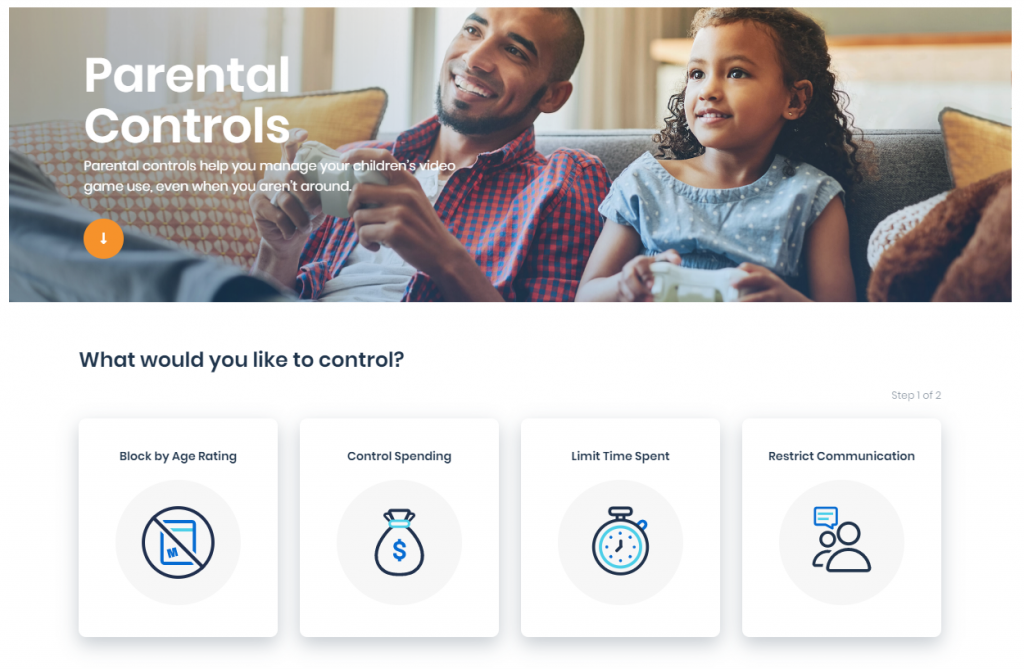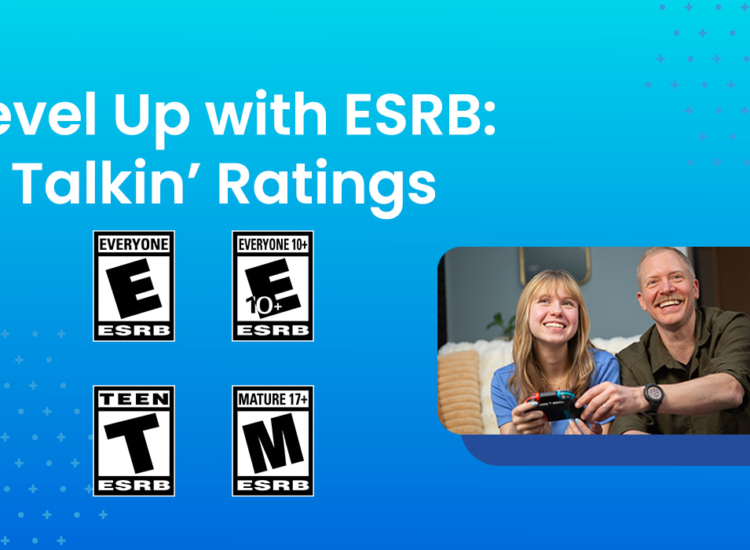What Parents Need to Know About Managing Their Kids’ Video Games During the Pandemic

As many of us find ourselves under orders to “stay-at-home” to help stem the coronavirus pandemic, playing video games can be a great way for families to have fun together and for kids to stay connected to their friends. Here are some simple steps that parents can take to make sure their children have a safe and age-appropriate experience.
Choose the Right Games for Your Family
Knowing which games are appropriate for your children is easier than you may think. If your child has asked to play or purchase a specific game, a good first step is to check the rating displayed on the product detail page. Parents can also conduct a search for the ESRB-assigned age and content ratings on esrb.org or our rating search app for iOS and Android by entering the game’s title. With our three-part rating system, you can quickly understand if a game is appropriate for your family. You can also review a game’s Rating Summary, which provides even more detail.

Still not sure? You can read reviews from game enthusiast websites, and watch gameplay clips on sites like Mixer, Twitch, and YouTube.
Have a Family Meeting and Set House Rules
Agreeing on some house rules for video games and devices may be the most important way to make sure your kids’ interactive experiences are safe and appropriate. Start by calling a family meeting to discuss these topics, and make sure everyone is on the same page regarding how they can engage with games and apps.
It’s not always easy to navigate these conversations, especially if you have some older kids that have been enjoying rule-free gaming sessions for some time, but we have a helpful Family Discussion Guide to get the conversation started. You can go over what games are appropriate for which of your children, explain why, and highlight some time limits for every day of the week. With all of this time at home, establishing a balanced structure around the day – especially when it comes to playing video games – is wise and a good way to maintain relative peace. Further, you may want to set rules about with whom your kids can play online and how much money (if any) they can spend online to download new games or make in-game purchases.
During times like these it may also be a good idea to have some house rules around keeping shared spaces tidy. Discuss how it’s important to put away controllers and wires after playing games. And if you’re playing as a family, you may also want to consider making some rules around sanitizing shared controllers.
Getting the house rules in writing is only the first part of the process. Everyone (yes, even you, parents) needs to abide by the rules! And they should be adapted as the stay-at-home orders lift and other factors come into play. Parental controls can help enforce whatever rules you establish.
Set Parental Controls
Since you may be pre-occupied preparing meals, cleaning your house, or working remotely, it’s important to set parental controls to make sure your kids are sticking to their routines and the house rules. With ParentalTools.org ESRB has made it easier than ever to help you manage what your kids can play, for how long, with whom, and how much they can spend.
For example, some parents may be comfortable with their teens diving into Call of Duty: Modern Warfare (rated M for Mature 17+), but that may not work for every family or for every child in the household. You can manage which games can be played (by specific family member on certain devices) by the ESRB-assigned age rating to ensure that your kids don’t play a game they may not be ready for.
Games like Fortnite (rated T for Teen 13+) and Minecraft (rated E10+ for Everyone 10+) can provide dozens of hours of gameplay with friends or alone.
Now more than ever, you may want to set play-time limits to make sure game time doesn’t interfere with homework, chores, or getting some physical exercise.

Speaking of playing with friends, many games enable players to play with each other online. While playing online can be a great team-building experience and a way for your kids to stay connected with their friends, you may not be comfortable with your kids playing with strangers. Thankfully, parental controls can manage (or block) chat features or in some cases let you approve friends.
Many platforms enable players to purchase new games via download and some games also offer in-game items for purchase. Setting controls to manage spending money on game or in-game purchases will make sure you don’t have any surprise charges to your account or credit card. If you want to learn more about the different types of in-game purchases, we have you covered.
You can find ESRB’s step-by-step instructions on how to activate the parental controls on your device(s) at ParentalTools.org. It’s never too late to set those controls!
Make sure you keep an eye on ESRB’s Twitter and Facebook for more advice. It’s never been easier to manage what, when, and how your kids engage with video games, all it takes is a little time and attention!
All of us at the ESRB hope that you and your families are healthy and safe.
 Patricia E. Vance is the president of the Entertainment Software Rating Board (ESRB). In her position, she leads the teams responsible for assigning age and content ratings to video games and apps, enforcing marketing guidelines adopted by the video game industry, and operating ESRB Privacy Certified, an FTC-sanctioned COPPA Safe Harbor Privacy seal certification program.
Patricia E. Vance is the president of the Entertainment Software Rating Board (ESRB). In her position, she leads the teams responsible for assigning age and content ratings to video games and apps, enforcing marketing guidelines adopted by the video game industry, and operating ESRB Privacy Certified, an FTC-sanctioned COPPA Safe Harbor Privacy seal certification program.


